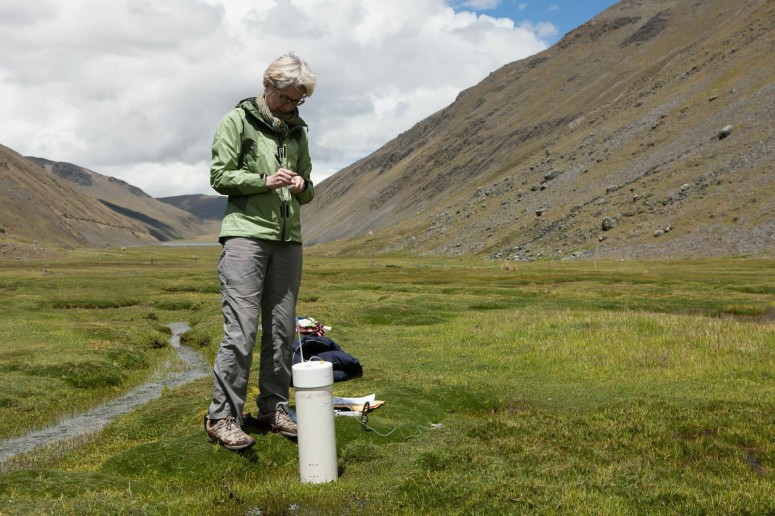Ecosystem Exploration

From Kenyon News - April 24, 2014
When Professor of Biology Siobhan Fennessy and Professor of Art Marcella Hackbardt set out for Peru over spring break in March, they felt something like nineteenth-century explorers. Fennessy, along with two other professors and a graduate student from Pennsylvania State University, collected samples of the scarcely studied wetlands in the middle of the Andes, while Hackbardt photographed the expedition.
“It felt very glamorous to have her with us,” said Fennessy of Hackbardt. “It was so National Geographic.”
Hackbardt explained that early expeditions often required the presence of an artist or photographer because it was the only way to record the surroundings. “Working with the scientists, I felt so connected with an important history of photography, the landscapes of nineteenth-century early photographers,” Hackbardt said. “When photography was invented, most often the photographers weren’t just taking photos of the land as a beautiful vista; their primary motivation was to document scientific research and geographic evidence.”
Fennessy, who also co-directs the environmental studies program at Kenyon, had traveled to Peru a few years earlier and was moved by the flora. “It’s very diverse, but the plants are extremely reduced in size because the conditions are so harsh,” she said. “It’s really just an interesting ecosystem.” When she had the chance to return to the country in the spring, she leapt at the opportunity – and convinced Hackbardt to accompany her. Hackbardt applied for and received the Labalme Faculty Research Grant to support her trip.
The duo said the conditions were particularly challenging – they were studying the surroundings at an altitude of 15,000 feet and carrying heavy equipment into remote, unmapped locations. They stayed in an unheated lodge, sleeping under cumbersome alpaca blankets. But they both agreed the trip was well worth the hardships.
“The glacier-lined peaks and the immense wetland valleys were spectacular,” said Hackbardt. “Alpacas and llamas dotted the landscape, along with occasional remote homes of the alpaca shepherd families, and frequent still-intact ancient Inca terracing. The landscape is so different from anything in the U.S.”
Both women are interested in climate change and hope to use what they learned and recorded on this trip to further their studies. “There’s concern because most of the wetlands in this area are fed by the water that is from glacier melt. Because glaciers are receding, the hydrology is changing,” said Fennessy, who hopes to use what she gathered for a more full-fledged project with Kenyon students.
Hackbardt said she took hundreds of photographs. As with some of her other work, she may digitally alter the images to help translate the concept of climate change, but she also photographed Fennessy and the others in action at each site. Just as she was impressed with the dedication and enthusiasm of the scientists and the physical demands of their field work, she was inspired by the striking surroundings.
“I don’t think I’ve ever been somewhere that evokes such raw emotional response.”